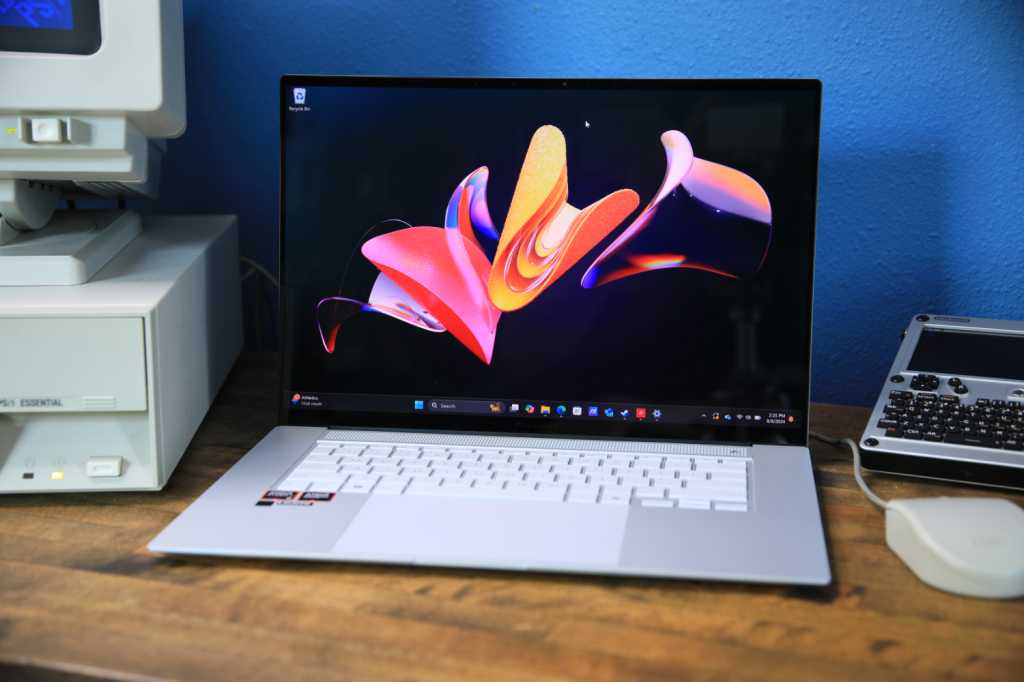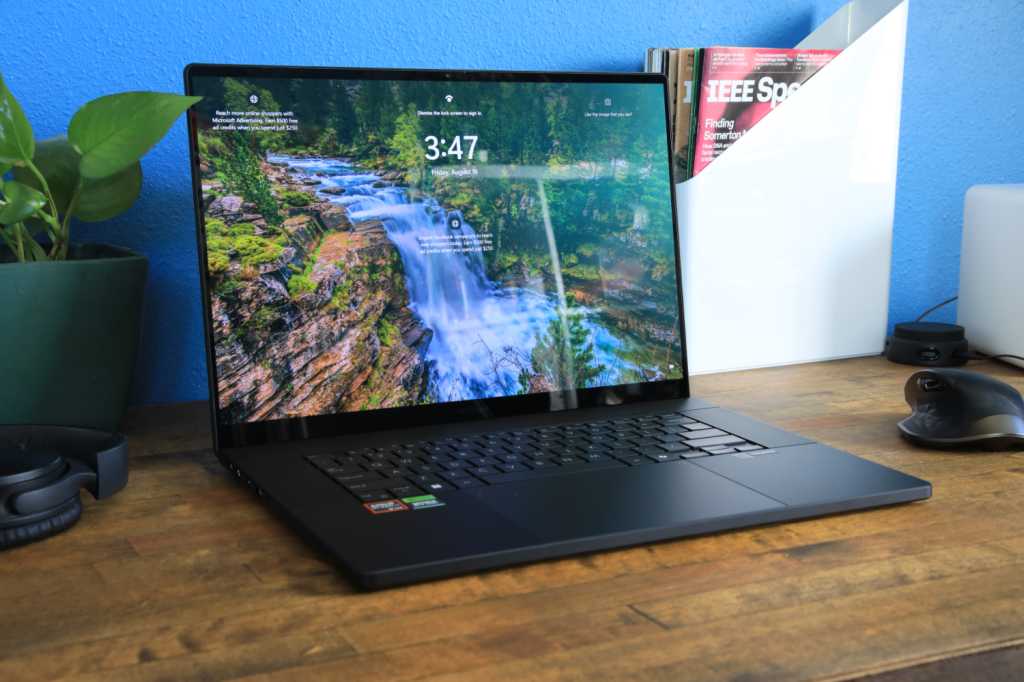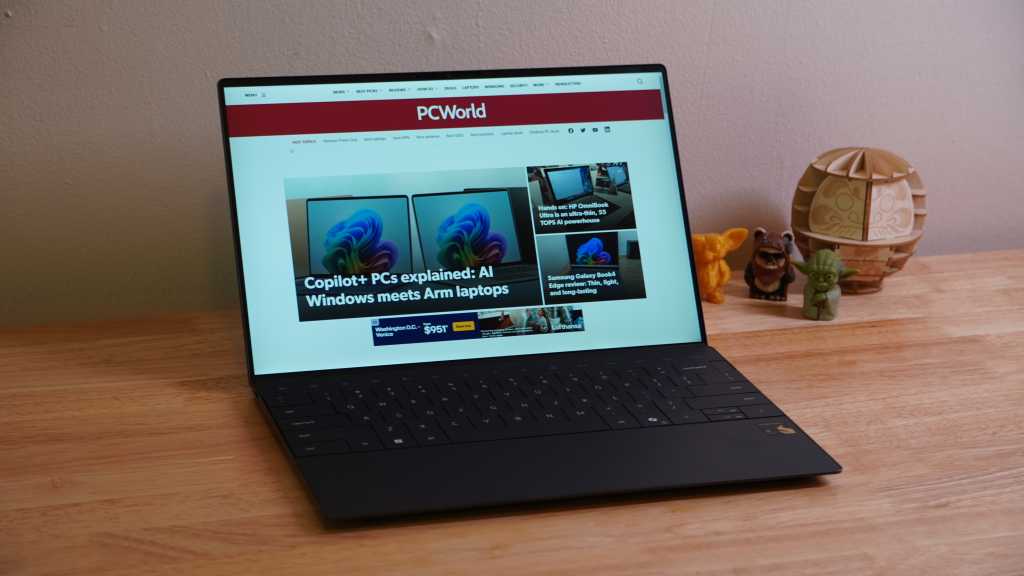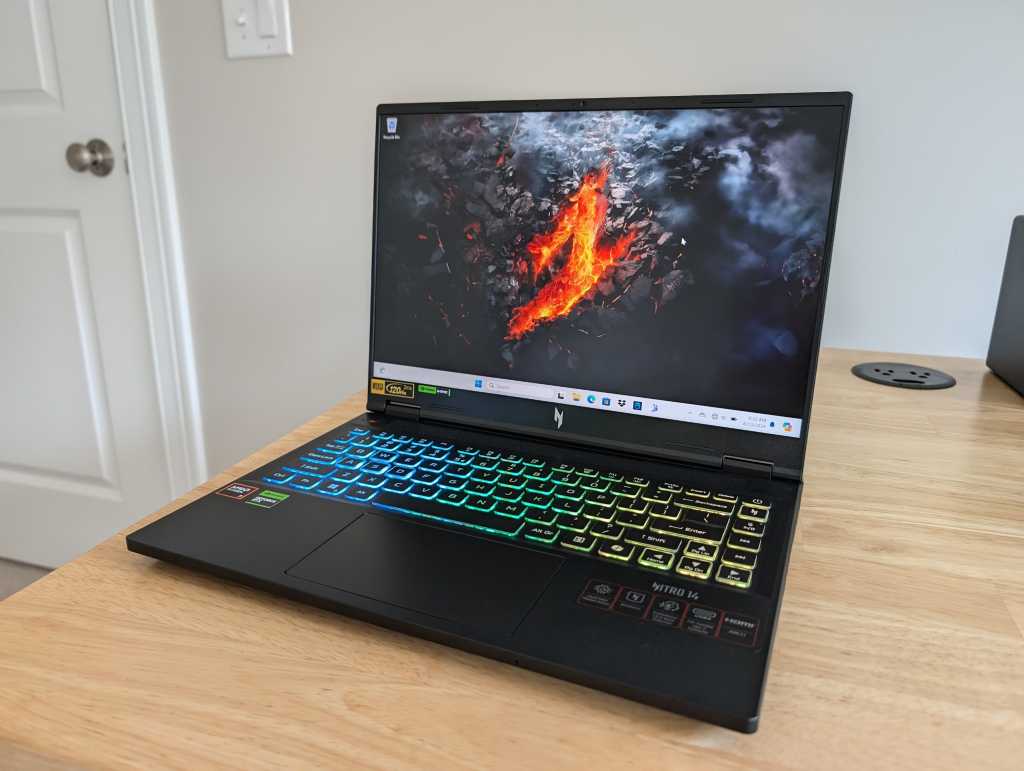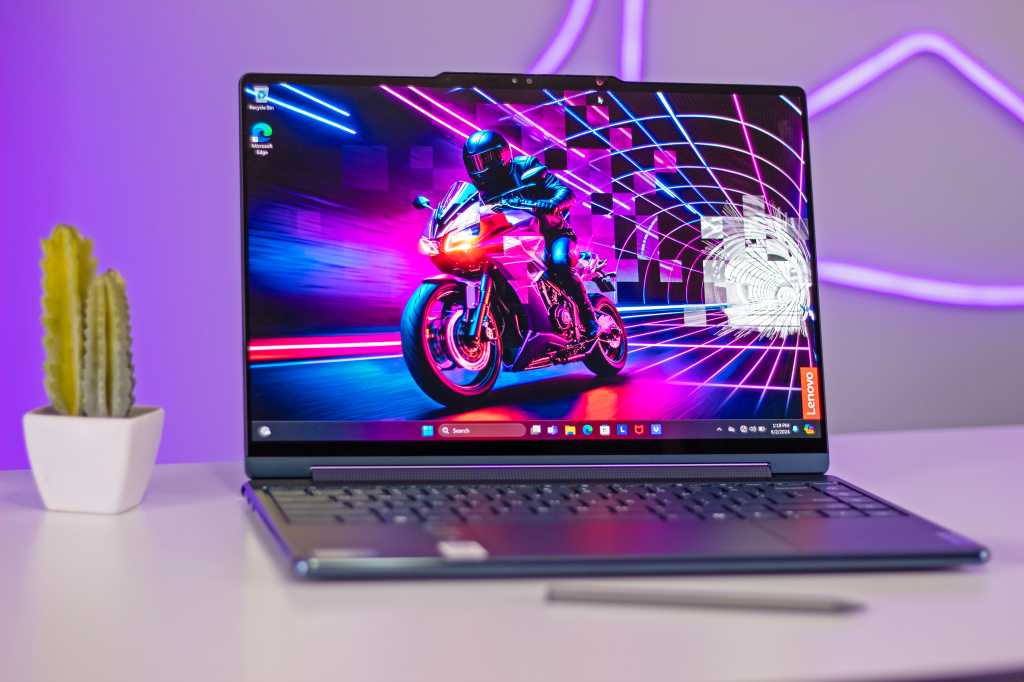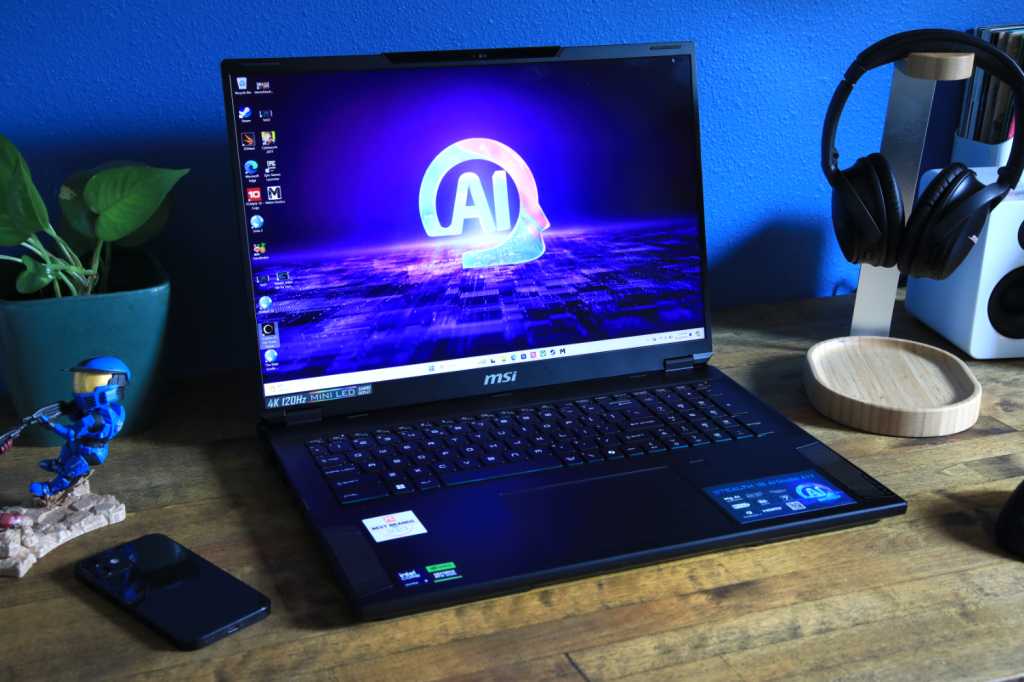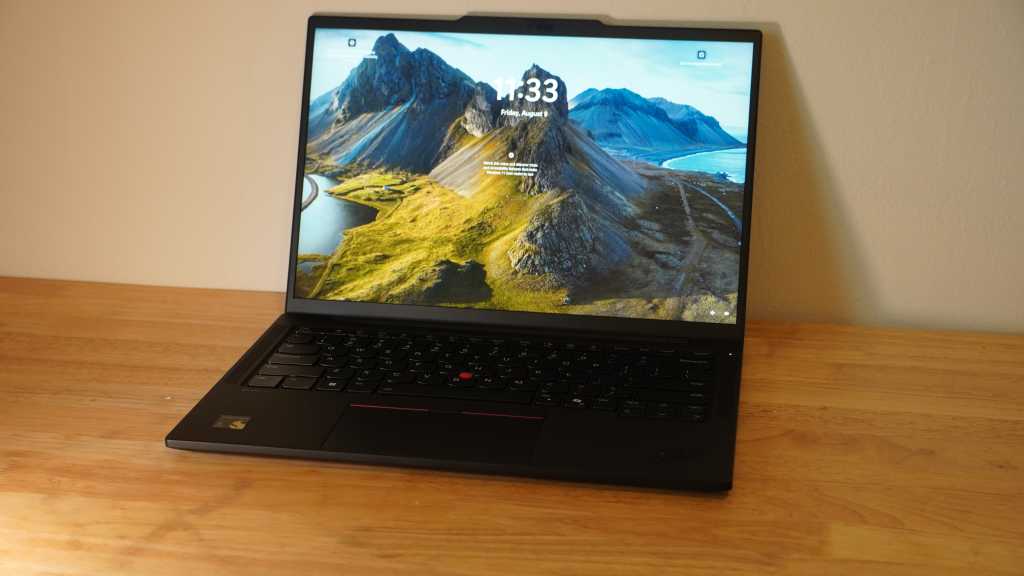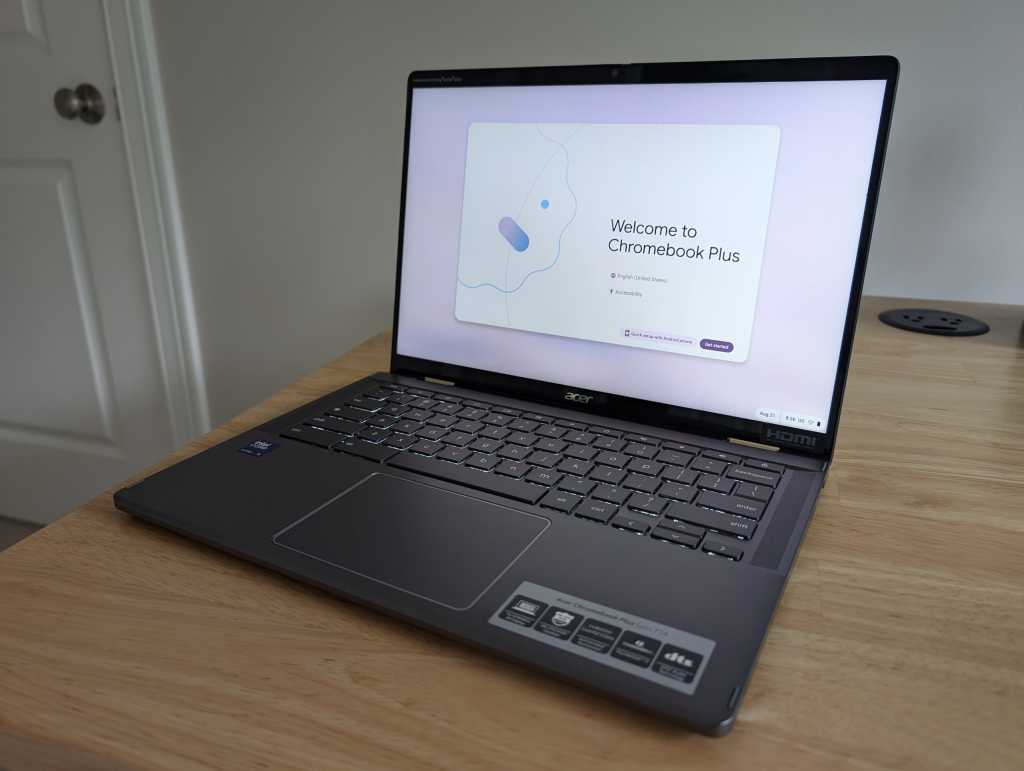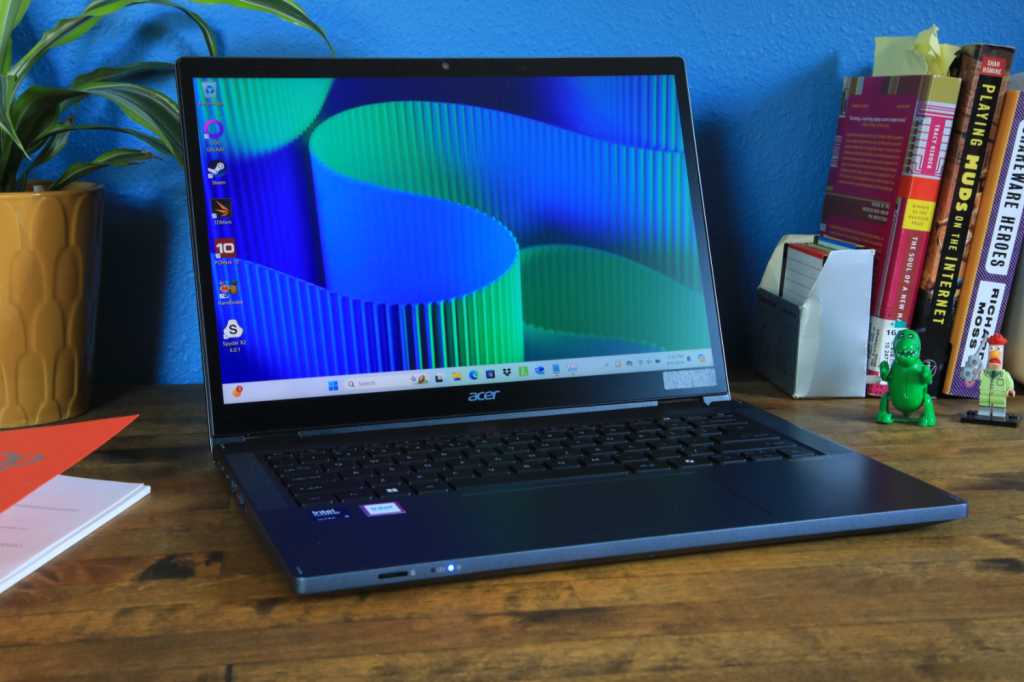The Asus Zenbook S 16, a sleek new laptop boasting AMD’s Ryzen AI 9 365 processor, 32GB of RAM, and Radeon 880M integrated graphics, promises a blend of performance and portability. While aesthetically pleasing, its performance and, more significantly, its thermal management, present some serious drawbacks.
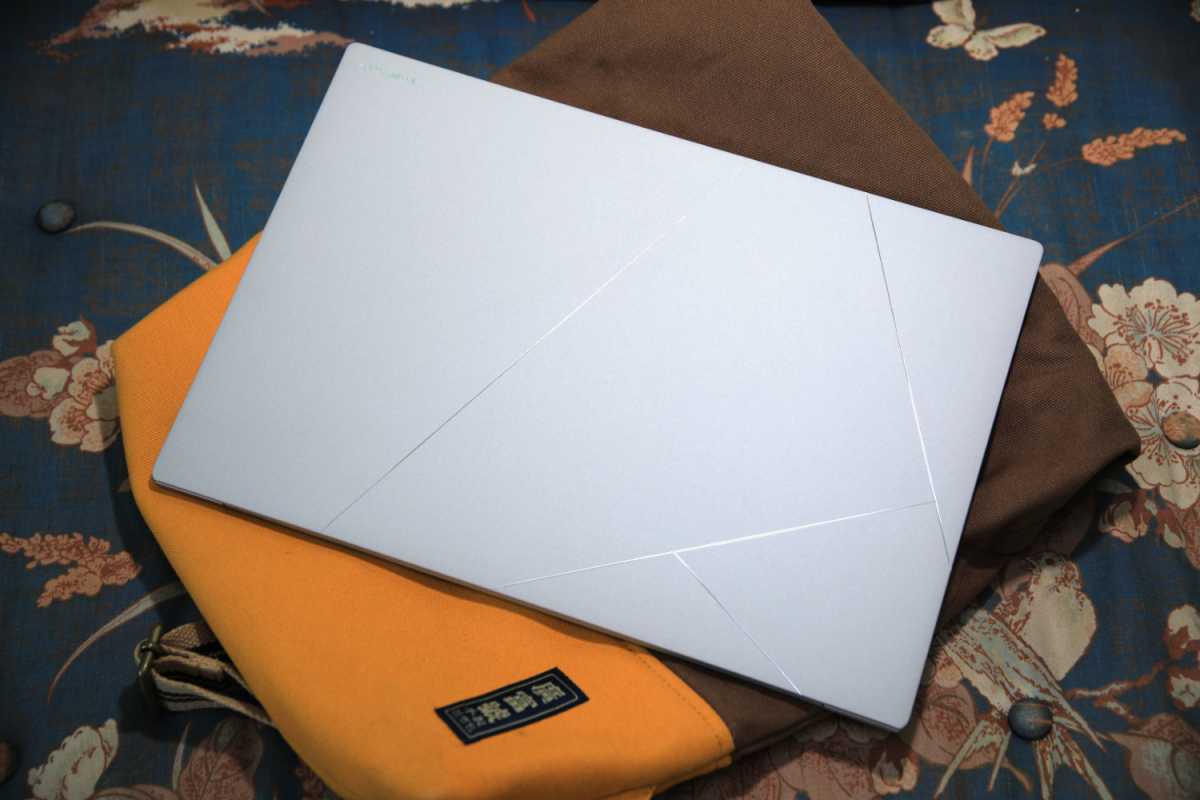 Asus Zenbook S 16 design
Asus Zenbook S 16 design
Overheating: A Major Concern
The most pressing issue with the Zenbook S 16 is its excessive heat generation. Under load, external temperatures reached a scorching 130.6 degrees Fahrenheit, making the laptop uncomfortable to use. Even less demanding tasks, such as file syncing, caused noticeable warming. While the laptop remains cool during web browsing or video playback, the extreme temperatures under benchmark conditions are unacceptable for a consumer device. Asus has acknowledged the issue and is working on a BIOS update (v309) to address the thermal problems, expected in early September. This review will be revisited upon its release.
Specifications and Features
Despite the thermal challenges, the Zenbook S 16 boasts impressive specifications:
- CPU: AMD Ryzen AI 9 365 2.0GHz
- Memory: 32GB LPDDR5X
- Graphics/GPU: AMD Radeon 880M (12 CUs)
- NPU: AMD XDNA NPU up to 50 TOPS
- Display: 16-inch OLED touchscreen, 2880×1800, up to 120Hz, 16:10 aspect ratio
- Storage: 1TB M.2 NVMe PCIe 4.0 SSD
- Webcam: 1080p with Windows Hello support
- Connectivity: 2x USB-C 4.0 (DisplayPort, Power Delivery), 1x USB-A 3.2 Gen 2, 1x HDMI 2.1, 1x 3.5mm combo audio, 1x SD card reader
- Networking: Wi-Fi 7, Bluetooth 5.4
- Battery: 78 watt-hours
- Dimensions: 13.92 x 9.57 x 0.51 inches
- Weight: 3.31 pounds
- Price: $1,699.99
Design and Build Quality
The Zenbook S 16 sports a premium “ceraluminum” finish, a fusion of ceramic and aluminum, which gives it a distinctive matte texture. The Scandinavian White color option, exclusive to the Ryzen AI 9 365 model, is particularly attractive. However, the ceraluminum coating is limited to the lid, while the interior feels less premium. Durability also raises concerns, as some wear was observed on the reviewed unit despite careful handling. The laptop’s thin profile (0.51 inches) and light weight (3.31 pounds) contribute to its portability.
Keyboard and Trackpad
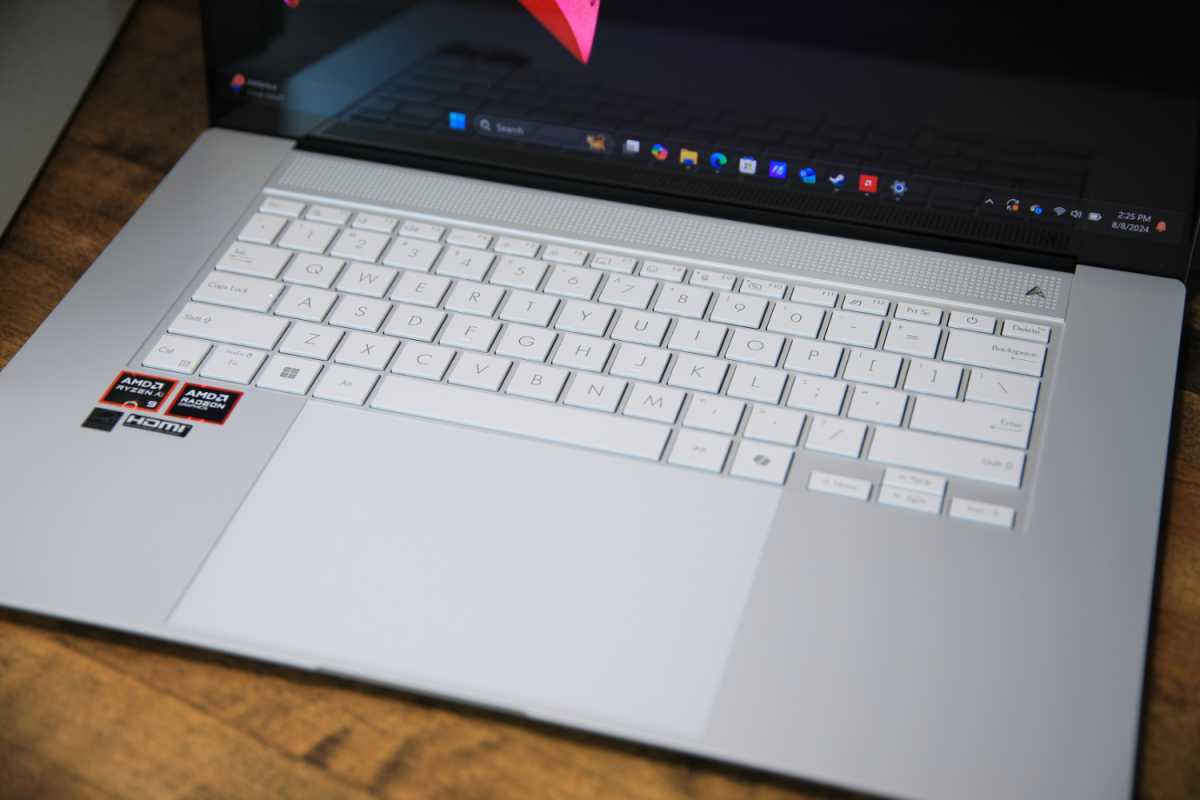 Asus Zenbook S 16 keyboard
Asus Zenbook S 16 keyboard
The Zenbook S 16 features a spacious, center-aligned keyboard without a numpad. Large keys provide comfortable typing, though the soft bottoming action lacks tactile feedback. The generously sized touchpad, nearly 6 inches wide, is responsive and accurate, rivaling those found on more expensive laptops.
Display and Audio
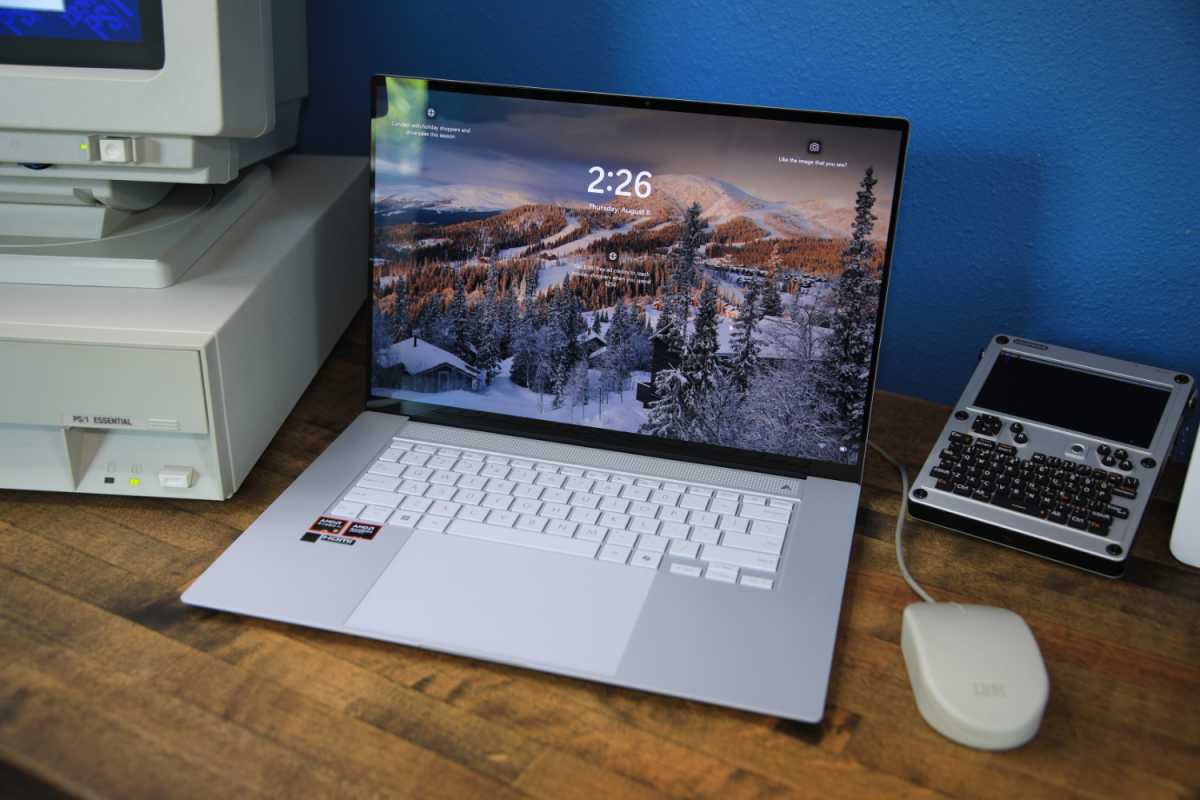 Asus Zenbook S 16 display
Asus Zenbook S 16 display
The 2880×1800 OLED touchscreen is a highlight, offering vibrant colors, deep blacks, and improved HDR performance with up to 500 nits peak brightness. However, the glossy finish and relatively low SDR brightness (up to 344 nits) can make it challenging to use in bright environments. The 120Hz refresh rate and AMD FreeSync Premium Pro support enhance motion clarity in games. The upward-firing speakers deliver clear audio at low volumes but become harsh at higher levels.
Webcam, Microphone, and Biometrics
The 1080p webcam produces good image quality with accurate colors, while the microphone array captures clear audio. Windows Hello facial recognition provides convenient and secure login. Presence detection automatically locks the laptop or turns off the display when the user is away, conserving battery life.
Connectivity
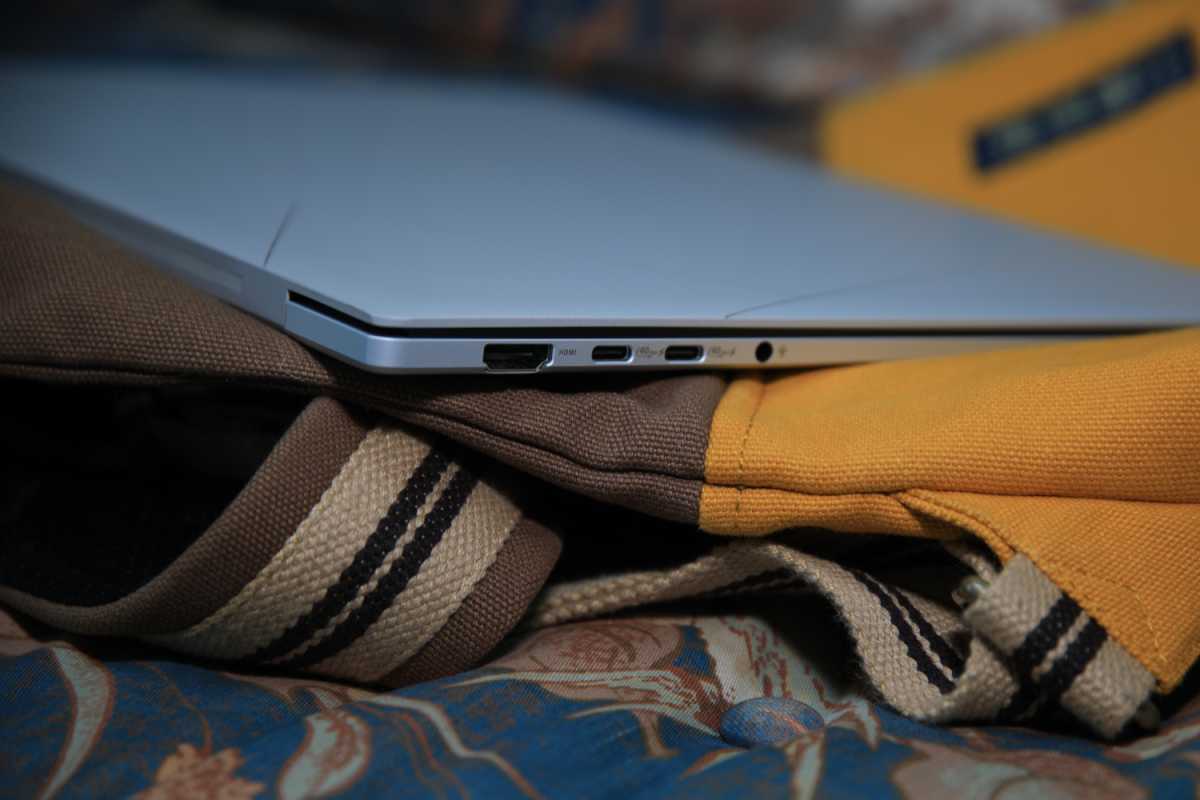 Asus Zenbook S 16 ports
Asus Zenbook S 16 ports
The Zenbook S 16 offers two USB-C 4.0 ports with DisplayPort and Power Delivery support, a single USB-A port, HDMI 2.1, an SD card reader, and a 3.5mm audio jack. Wi-Fi 7 and Bluetooth 5.4 ensure future-proof wireless connectivity.
Performance
The Ryzen AI 9 365, despite its “9” branding, delivers performance comparable to the Ryzen 7 8840U. In benchmarks like PCMark 10, Cinebench R23, and Handbrake, the Zenbook S 16 lagged behind competitors with Intel Core Ultra processors. While adequate for everyday tasks, the CPU performance doesn’t live up to the flagship branding. The Radeon 880M integrated graphics, while capable of running older games and even some AAA titles at low settings, offers performance similar to the previous-generation Radeon 780M.
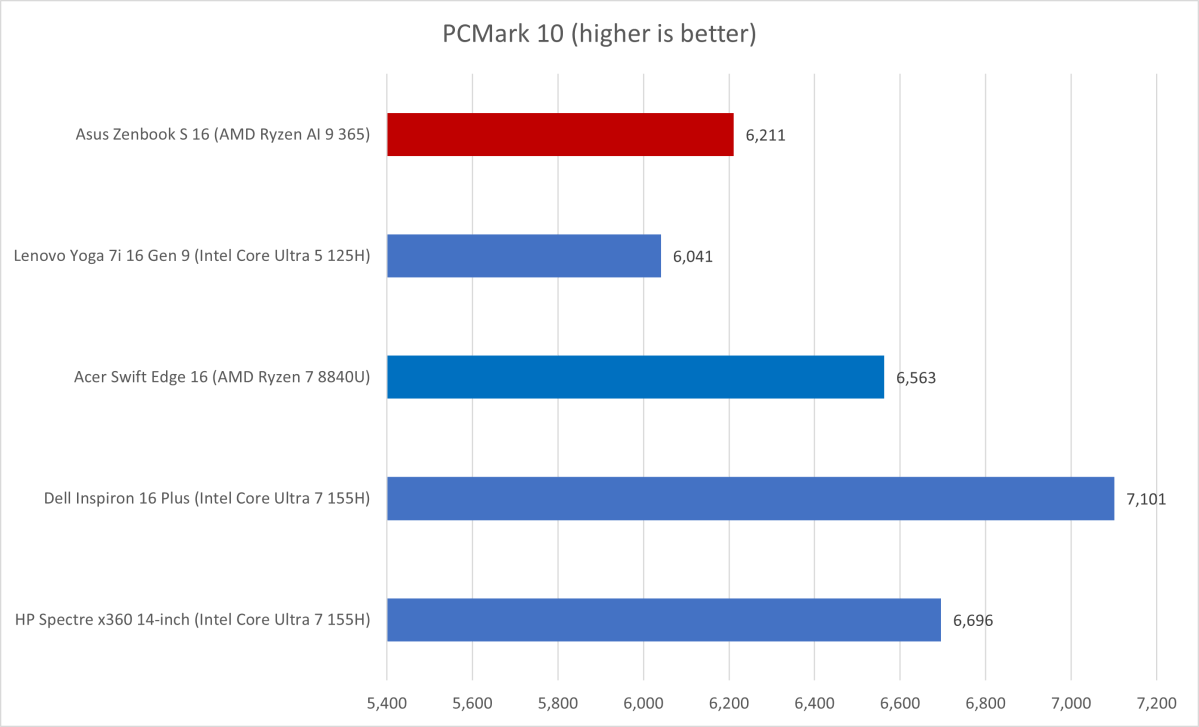 Asus Zenbook S 16 PCMark results
Asus Zenbook S 16 PCMark results
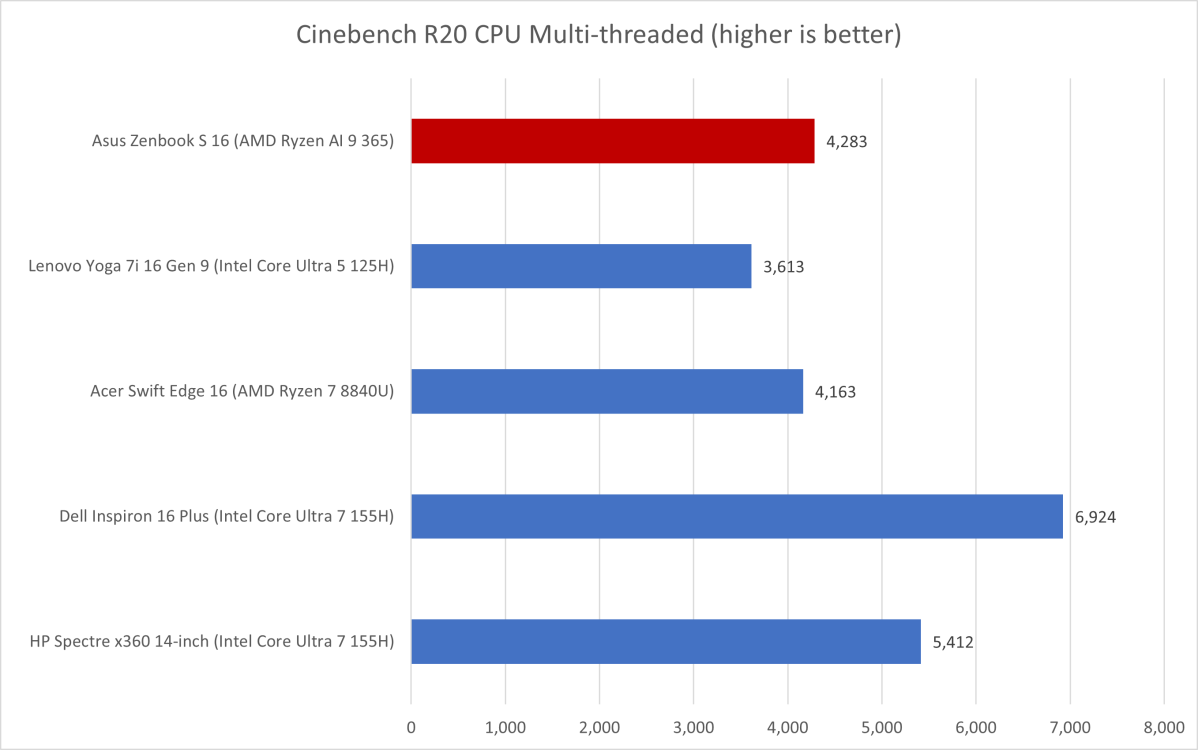 Asus Zenbook S 16 Cinebench results
Asus Zenbook S 16 Cinebench results
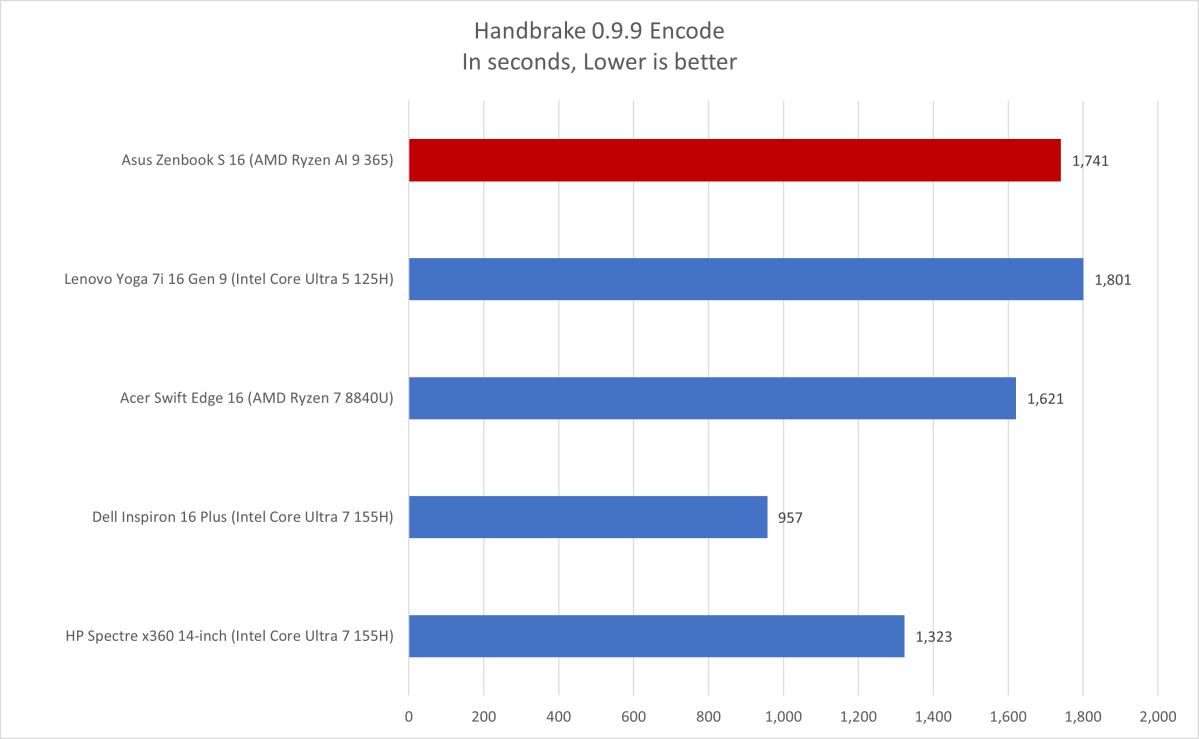 Asus Zenbook S 16 Handbrake results
Asus Zenbook S 16 Handbrake results
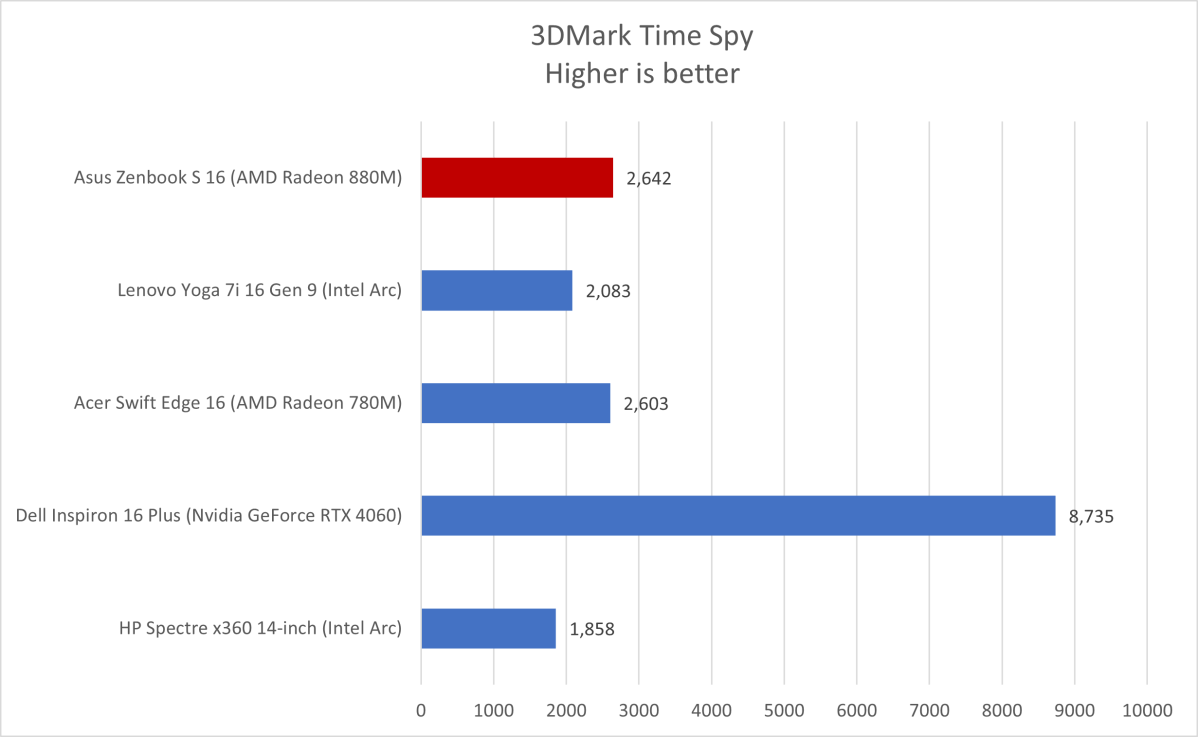 Asus Zenbook S 16 3DMark results
Asus Zenbook S 16 3DMark results
Battery Life
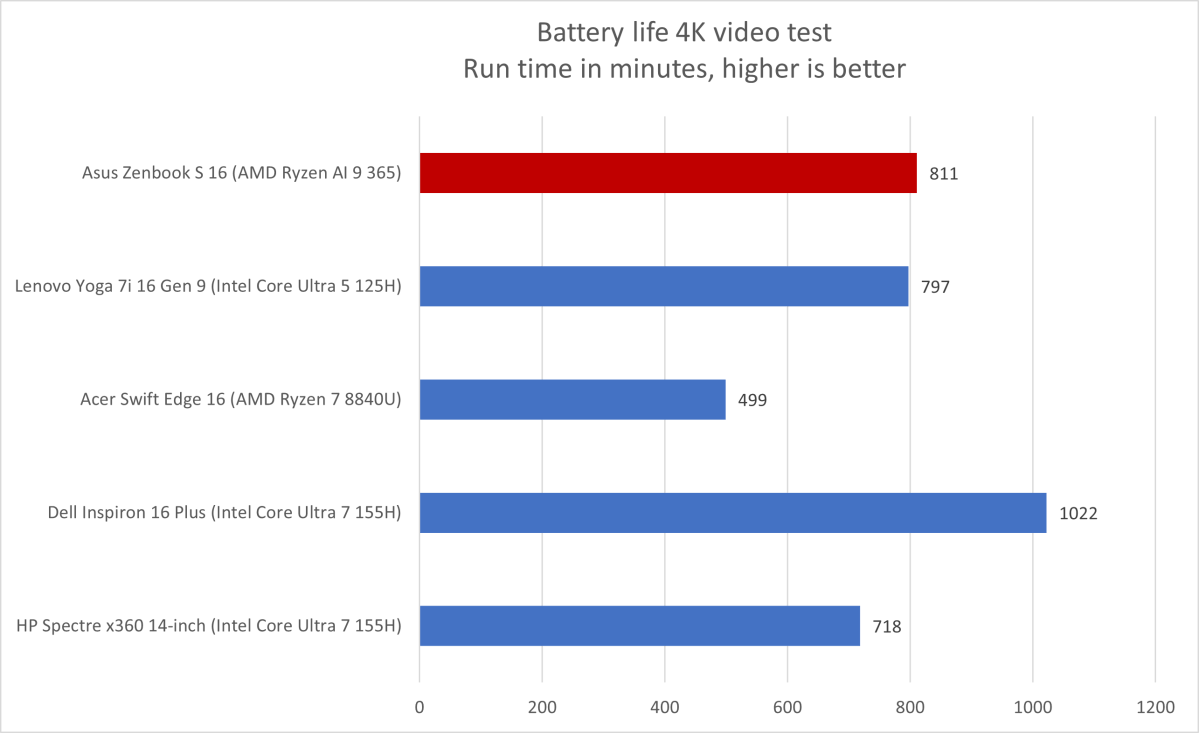 Asus Zenbook S 16 battery life results
Asus Zenbook S 16 battery life results
The 78 watt-hour battery provides a respectable 13.5 hours of runtime in our video playback test, outlasting several competitors. However, Qualcomm-powered laptops offer significantly longer battery life.
Conclusion
The Asus Zenbook S 16 presents a compelling combination of features, including a stunning OLED display, large touchpad, and lightweight design. However, the underwhelming performance of the Ryzen AI 9 365 and, more importantly, the severe overheating issue, hold it back. Until the BIOS update addresses the thermal problems, it’s difficult to recommend the Zenbook S 16, especially given its price.



